#princess isabella of parma
Explore tagged Tumblr posts
Text
i think it’s really insulting when people assume that historical women had no objections to their situations. people know when they’re being treated unjustly
7 notes
·
View notes
Text







florence + the machine lyrics x colors x textiles in art — yellow/gold
Rabbit Heart (Raise It Up) – Lungs // Portrait of Princess Maria Clementina Sobieska – William Mosman 👑 Only If For a Night – Ceremonials // Isabelle de Bourbon, Infanta of Parma – Jean-Marc Nattier 👑 Over the Love – Over the Love // Portrait of Archduchess Maria Maddalena of Austria – Frans Pourbus the Younger 👑 Over the Love – Over the Love // Portrait of Isabella Charlotte of Nassau-Dietz as Flora – Lancelot Volders 👑 King – Dance Fever // Portrait of Konstancja Krystyna Wielopolska – Pierre Mignard I 👑 Girls Against God – Dance Fever // Portrait of Barbara of Portugal, Queen of Spain – Jean Ranc 👑 Heaven Is Here – Dance Fever // Princess Louisa Maria Teresa Stuart – Alexis Simon Belle
#florence + the machine lyrics x colors x textiles in art#rabbit heart#lungs#lungs album#only if for a night#ceremonials#over the love#king#king florence#girls against god#heaven is here#dance fever#florence + the machine#florence and the machine#fatm#gold#yellow#art#art history#lyrics#lyric art
401 notes
·
View notes
Text
Btw, if anyone is looking for a tragic historical blorbina with potentially woolawoo qualities, today I learned of:
Apparently she had quite revolutionary thoughts for her time
28 notes
·
View notes
Text
Someone should truly speak bout the “later wife effect” that seems to have haunted historical figures since times long forgotten.
To break it down to you, what I call the “later wife effect” occurs when a male historical figure suddenly looses his beloved wife (most of the times, his first one) in an untimely and tragic manner -either by a childbirth gone wrong, an accident or a sudden illness-, turning the once mirthful husband into a grief-stricken widower. Perhaps because he lacks succession from said wife, because he has to provide spares to his heir, or even because an alliance is needed, he is forced to marry again; but the love never arises fully, their marriage turns into a bound of duty, and no matter what she does, or how loved she is outside their marriage: the later wife will forever be under the shadow of the first, a perfect idol, immortalised by her early death.
The “later wife effect” knows various levels:
In 1673, Leopold I, Holy Roman Emperor, lost his beloved Margaret Theresa when she was yet to turn twenty two and with child. Their seven years of union had produced four children, but only a daughter lived when Margaret Theresa died, and he went on to marry twice again; and even though he would sorrowfully remark that neither Claudia Felicitas of Austria or Eleonore Magdalene of Neuburg, his following brides, were “not like my only Margaretha”, his marriages were remarkably happy and so was he. This could be one of the mildest examples.
The middle ground would be when the marriage with the later wife is dutiful and polite, but loveless. Frederick William II of Hesse married Alexandra Nikolaevna, but soon lost her due to complications of childbirth. He would remarry nine years later to the beautiful and lively Anna of Prussia, and even though they eventually had six children, their marriage was notably cold and unhappy. Leopold I of Belgium widowed of his wife, Charlotte of Wales, soon after she gave birth to a dead son; fifteen years later, know king of Belgium, he took Louise-Marie of Orléans hand in marriage; she was shy, delicate, witty and partook in many charitable causes, earning the love of the Belgians, and the respect of her husband, with whom she had a fruitful and tranquil union; but Leopold would not be faithful to her, committing adultery with a much younger Arcadie Claret, who was said to resemble the long gone princess Charlotte. She perished a year after he had a son with Claret, and her dead did not stop the relationship between the two of them.
More unhappy cases of this effect would be those of Maximilian I, Holy Roman Emperor, and his descendant, Joseph II. When still an archduke, Maximilian married Mary of Burgundy and loved her much, a love so legendary it lived through generations in the art commissioned by their descendants. But the fairytale would come to an abrupt end when, after five years of marriage, Mary would find her untimely dead while pregnant with their fourth child, after her horse threw her off the saddle. Maximilian was most heartbroken and, after a failed marriage attempt with the young duchess Anne of Brittany, he would wed Bianca Maria Sforza. The empress from Milan was deemed “more beautiful than Mary” by Maximilian, but neither her beauty not her many charms of her would soften his callous attitude towards his wife. Having endured a miscarriage during the first months of their union, Bianca Maria, the once most sought after princess in Europe, had become a ghost in her own court, severely neglected by her husband, who refused to attend to her own funeral nor dedicate a gravestone for her. Similarly, after the traumatic passing of his wife, Isabella of Parma, Joseph II was forced to remarry to Maria Josepha of Bavaria, who he did not found as attractive as the late archduchess. He grew so disgusted of her that the same devoted husband that has been by Isabella’s bedside now commanded to put a wall between his balcony and hers, so that he could not see her, distressing old servants in the palace so much with his cold attitude that some left. When, after two years of marriage, her life was robbed by smallpox -the same ailment that had taken Isabella’s life four years before-, Joseph declared she had been worthy of respect and that he repented his coldness. However, he refused to visit her bedside and did not appear during her burial.
This should not be confused with what I call “the younger wife effect”, which takes place when a widowed historical figure, who had long remained unwed by choice, suddenly takes marriage to a beautiful and much younger person that is described to bring happiness to his once lonely and dull life. This would perfectly be exemplified with prince Maximilian of Saxony’s marriage with princess Maria Luisa Carlota of Parma, almost twenty one years since the passing of his wife (princess Carolina of Parma) or Edward I’s marriage to Marguerite of France.
18 notes
·
View notes
Text







Royal Birthdays for today, December 31st:
Eleonora Gonzaga, Duchess of Urbino, 1493
Beatrice of Portugal, Duchess of Savoy, 1504
Go-Yozei, Emperor of Japan, 1572
Charles Edward Stuart, The Young Pretender, 1720
Isabella of Parma, wife of Joseph II of Austria, 1741
Kapiʻolani, Queen of the Hawaiian Islands, 1834
Princess Victoria Adelaide of Schleswig-Holstein, Duchess of Saxe-Coburg and Gotha, 1885
#eleonora gonzaga#beatrice of portugal#charles edward stuart#isabella of parma#Victoria Adelaide of Schleswig-Holstein#queen Kapiʻolani#emperor Go-Yozei#bonnie prince charlie#long live the queue#royal birthdays
18 notes
·
View notes
Text
What would be the point of us having loved each other in this world if we were to be separated for all eternity?
— Letter nº 189 of Princess Isabella of Parma to Maria Christina, Duchess of Teschen.
9 notes
·
View notes
Text
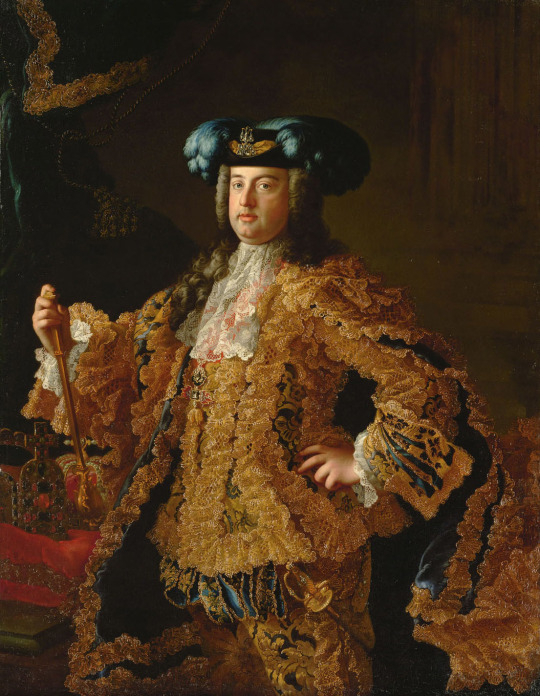
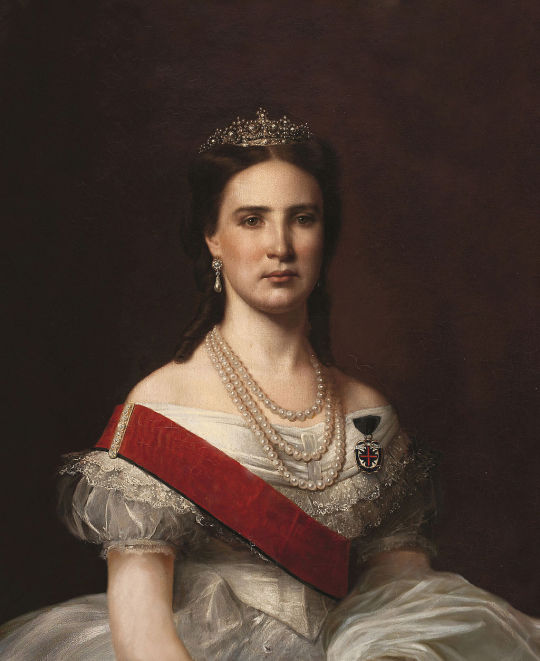
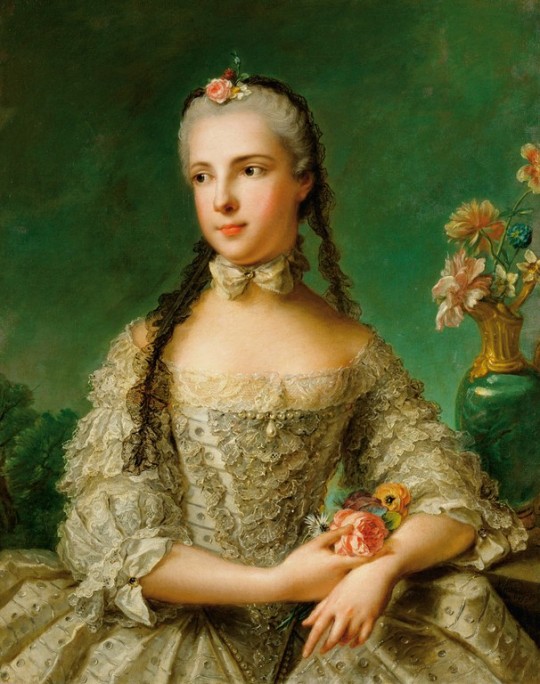

Franz Stephan, Holy Roman Emperor (1708-1765): He has several titles of his own, but he was mainly Maria Theresa's consort.
Charlotte of Belgium, Empress of Mexico (1840-1927): Archduchess of Austria and Empress of Mexico by marriage to Maximilian.
Princess Isabella of Parma (1741-1763): First wife of Joseph II, daughter of the Duke of Parma. She also may have possibly had a romantic affair with her sister in law.
Maria Josepha of Bavaria (1739-1767): Second wife of Joseph II, their marriage was cold. After her death, Joseph swore off marriage.
Also, Rudolph II did not marry and thus did not have a consort. But I do encourage you to Google his mistress Kateřina Stradová.
#best habsburg bracket#bonus round#bet you wish that you'd voted for Franz Joseph now#because you know who'd be in this poll then
22 notes
·
View notes
Text

𝒫𝓇𝒾𝓃𝒸𝑒𝓈𝓈 𝐼𝓈𝒶𝒷𝑒𝓁 𝑜𝒻 𝒫𝒶𝓇𝓂𝒶 𝒶𝓃𝒹 𝑀𝒶𝓇𝒾𝒶 𝒞𝒽𝓇𝒾𝓈𝓉𝒾𝓃𝒶, 𝒟𝓊𝒸𝒽𝑒𝓈𝓈 𝑜𝒻 𝒯𝑒𝓈𝒸𝒽𝑒𝓃

Happy pride month everyone!! This month I will be trying to touch on some of my favorite queer icons in history. :)
Maria Christina Johanna Josepha Antonia was born on 13 May, 1742, the fifth daughter of Maria Theresa of Austria and Francis I, Holy Roman Empire, and elder sister to Marie Antoinette. Maria was deemed to be her mothers favorite child, which shows obvious in the letters between the two. This favoritism sparked much jealousy in her siblings, teasing and critizing her heavily, this favoritism, of course came with many upsides. She received a stupendous education and was regarded as perfectly speaking french, italian, and english, aswell as being an exceptional painter. But as a mothers favoritism often does, it isolated Maria greatly, which although having fell in love with multiple men in her life, none of the matches were quite supported by her mother.

Isabel of Parma on the other hand, did not have much love with her mother, Isabella of Bourbon-Parma was born on 31 December, 1741, to Philip, Duke of Parma, and Louise Elisabeth of France, the eldest daughter of Louis XV and Marie Leszczyńska. At a young age Isabel was recorded to have threw violent tantrums frequently, which in turn her mother Elisabeth disciplined the girl so severely that isabel’s paternal grandmother Queen Elisabeth Farnese of Spain (de facto), compared the discipline to a military drill, (although Queen Elisabeth was recorded as to promoting this discipline.), soon enough their relationship grew so stressed that Isabel’s mother regarded the young girl as stubborn and unbearable to raise. Isabel after being dropped into the hands of her governess and forgotten about by her mother, quickly turned to mischief and curiousity, being recorded to play all day and night with no break, isabel writing, 'My head was always in the clouds, occupying itself with a hundred thousand ideas at once'.

Due to the influences of Madame de Pompadour, Louis XV and Maria Theresa of Austria came together to strengthen and ally the houses of bourbon, and that of the habsburg. In this alliance resulted many marriages, one of them being of Isabel of Parma, (a bourbon princesse) and Joseph II, Archduke of Austria, and the elder brother to Maria Christina. Her marriage with Joseph seemed to be impartial, he was recorded to have been taken by love (although he wasn’t really sure how to show it) with his new bourbon wife, but it seemed this love was awfully one sided, Isabel having had no opinion on her new husband.
During this period of time, Isabel was said to have grown majorly depressed and borderline suicidal. In a letter to Marie Christine saying; ‘What should the daughter of a great prince expect? Her fate is unquestionably most unhappy. Born the slave of the people’s prejudices, she finds herself subjected to this weight of honours, these innumerable etiquettes attached to greatness… In the end the effort is made to establish her. There she is condemned to abandon everything, her family, her country–and for whom? For an unknown person, whose character and manner of thinking she does not know… sacrifice to a supposed public good, but in fact rather to the wretched policy of a minister who can find no other way for the two dynasties to form an alliance which he pronounces indissoluble–and which, immediately it seems advantageous, is broken off…’
By the Isabel reached the age of twenty she was extremely successful in most everything she did, she continued her education, helped her husbands military strategies, and was said to have painted and decorated many rooms in the schobrunn palace, many of which are still on display today.
In the midst of her life in Vienna, it was obvious that Isabel and Maria had grown awfully close, many letters survive today of their close bond with eachother, clearly showing how Isabel had taken a liking to her husbands sister, instead of him.
“The confusion which reigns in a certain drawer which lives in my room, where are to be found together and without rhyme or reason a political tract, a pile of letters, a comic opera, a vaudeville, a treatise on education, a clavier part, some moral reflections. A sermon jostles a treatise on all types of foolishness, prayers are mixed up in a paper devoted to declaring my love to you, letters from the emperor muddle up with letters of a hundred persons who are indifferent to me, and with those letters which are so dear to me and constitute the sweetness of my life.”
Unfortunately, apart from one responding letter to Isabel, none of Maria’s correspondence to her sister-in-law survived. But it is clear that at some point, Maria had either fallen out with Isabel, or confessed to her that they could no longer continue their rendezvous, this is made clear in a very passionate letter Isabel had written.
“I am writing you again, cruel sister, though I have only just left you. I cannot bear waiting to know my fate, and to learn whether you consider me a person worthy of your love, or whether you would like to throw me into the river…. I can think of nothing but that I am deeply in love. If I only knew why this is so, for you are so without mercy that one should not love you, but I cannot help myself.”
Sadly, shortly after making this letter, Isabel passed away at the age of 21 due to smallpox, aware that she was bound to pass soon, Isabel wrote one last letter to her dear Maria. Advising her on how to navigate and survive the court of Vienna, and how to convince her mother on a marriage.
Clearly, Maria took his letter with utmost sincerity, as after after mourning for much much longer then required, Maria had convinced her mother on a marriage, ending up being the only daughter of Maria Theresa to marry for love, instead of convenience. That suitor being the Prince Albert of Saxony, a man with no fortune or inheritance.

10 notes
·
View notes
Text
Joseph was married twice, but left no children. He first married, at age nineteen, Isabella Infanta of Parma; who was eighteen, and of whom he was dotingly fond. Her father was Don Philip, Duke of Parma, her mother a daughter of Louis XV of France; thus she was descended from the Bourbons on both sides. Isabella, although pleasing, had no claims to be called a beauty. She had the dark olive of the Spanish ladies, which Vienna unfavorably contrasted with their fair delicate complexion of the archduchesses her sisters-in-law, some of whom were among the handsomest young ladies of Europe. Her mouth was pretty, her teeth were fine, and her eyes full of animation; but when she was silent or pensive her face was devoid of attraction.
She was said to have had a prior attachment, which made her insensible to all the affectionate love which Joseph entertained for her, and which he showed her on every occasion. Moreover, there is a strange story of her having always entertained a foreboding of an early death. She bore to Joseph, in 1761, a daughter, who was called after her grandmother, Theresa, and whom she loved with all the glowing affection of her impassioned nature. When remonstrated with, that for the sake of her daughter she should not indulge in such gloomy fancies, she answered: “Do you believe that I should leave my child behind? I shall certainly not do so; so you will have her only about six or seven years.” the speech was the more extraordinary as the young princess actually died at the age of seven.
As for the gloomy Empress Isabella, whilst she was pregnant the second time, she was seized with smallpox, of which she died on the 27th of November, 1763; after having borne, on the 22nd of that month, a second daughter, who received the name of Christina, but died on the day of her birth.
Joseph scarcely ever left the bedside of his tenderly beloved wife to her vary last moment. As he was nearly sinking under the burden of his grief and from exhaustion, he had to be removed by force from the scene of his sorrow. Whilst he thus gave way to his passionate grief, his sister Christina, who had been the confidant of Isabella, told him – with the best intentions but with very ill-judged candor – that Isabella had never returned his affectionate love; and that her tenderness towards him had only been assumed from a feeling of duty. This cut terribly deep into Josephs heart, and filled him with a bitterness which he never got over.
2 notes
·
View notes
Text
im not sure if any of princess isabella of parma’s work has been translated into english…..apparently a lot of it hasn’t been published at all and only exists in manuscript form in a hungarian archive. i might translate some of her published stuff and post it here, just for funsies. you guys would like her, she wrote about the oppression of women and wanting to die and she was in love with her sister in law
4 notes
·
View notes
Text
irl lesbian rudolf,,,,, filing this away in my head
#ajkdldlfjjf#lesbian (?) princess married to joseph ii who had an affair w her bisexual sister in law. eventually died of childbirth complications#i feel like lesbian rudolf would find out about this and be tormented by the knowledge hahsjdjdj (in the lesbian rudolf fic i'm rotating in#my head she's secretly lesbian but everyone assumes she's a man because fj and sisi decided to fake that cos sisi refused to have more kids#anyway um yeah#i think once again it exemplifies why historical fiction about actual historical queer women is sometimes super depressing to work on#thats why lesbian todolf /hj#isabella
6 notes
·
View notes
Text

Chère Eurydice
J'aurais pleuré autant qu'Orphée dans l'idée seule que vous êtes mortelle.
(I would have cried as much as Orpheus just thinking that you are mortal.)
Archduchess Maria Christina of Austria (1742 - 1798) and Princess Isabella of Parma (1741 - 1763)
11 notes
·
View notes
Text


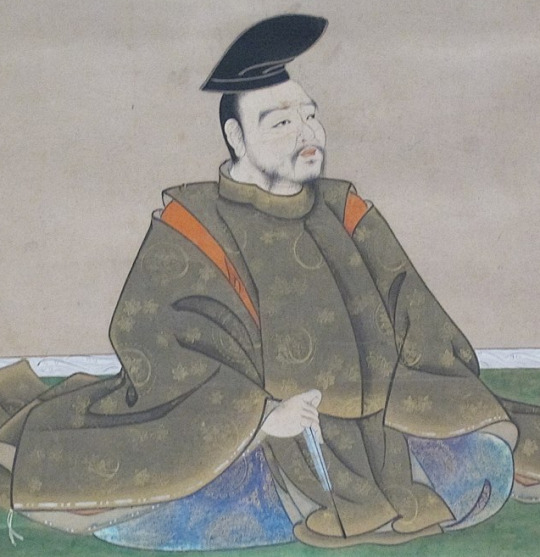
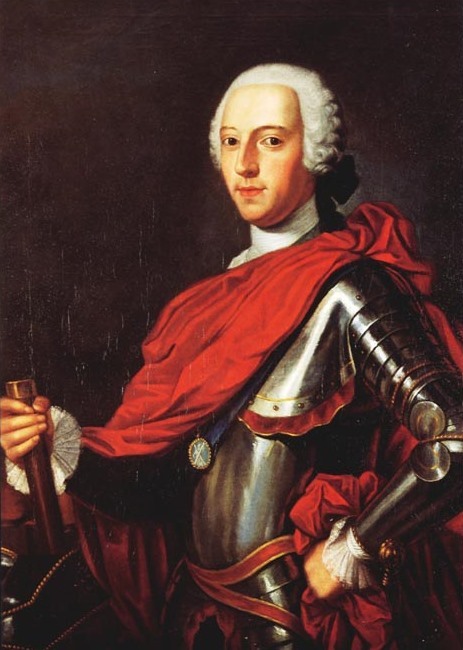
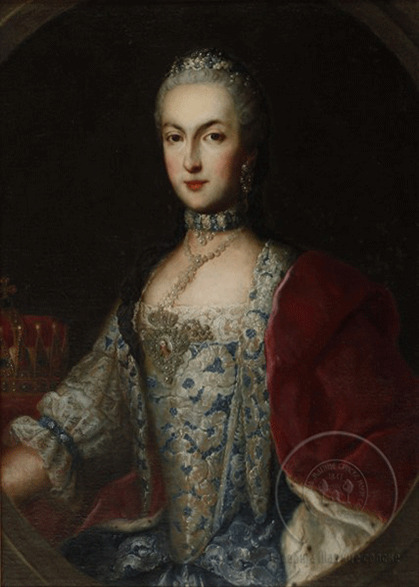
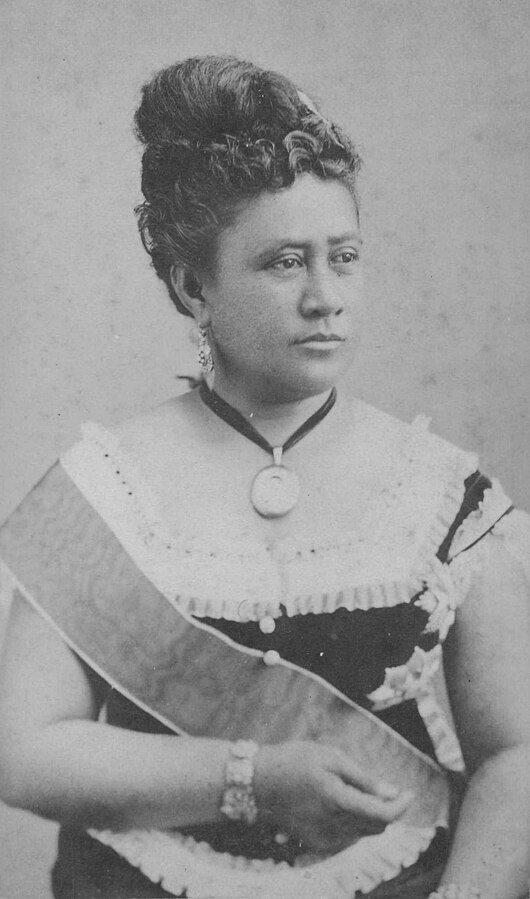

Royal Birthdays for today, December 31st:
Eleonora Gonzaga, Duchess of Urbino, 1493
Beatrice of Portugal, Duchess of Savoy, 1504
Go-Yozei, Emperor of Japan, 1572
Charles Edward Stuart, The Young Pretender, 1720
Isabella of Parma, wife of Joseph II of Austria, 1741
Kapiʻolani, Queen of the Hawaiian Islands, 1834
Princess Victoria Adelaide of Schleswig-Holstein, Duchess of Saxe-Coburg and Gotha, 1885
#isabella of parma#eleonora gonzaga#beatrice of portugal#emperor Go-Yozei#charles edward stuart#Kapiʻolani#queen Kapiʻolani#Victoria Adelaide of Schleswig-Holstein#royal birthdays#long live the queue
23 notes
·
View notes
Text
Jesus Mary Joseph and God's child angels tribute edit 2025 Reem Nabhan, Aya and Abdullah Al-Maghari, Lana Jamal Khalil Abdel Aal, Khalil Jamal Khalil Abdel Aal, Taline Jamal Khalil Abdel Aal, Karim Jamal Khalil Abdel Aal, Sara Ahmed Sedqui Abdel Ghafoor, Habiba Mahmoud Fahmi Abdel Qader, Mohamed Yasser Ahmed Abdel Wahab, Lama Yasser Ahmed Abdel Wahab, Haitham Yasser Ahmed Abdel Wahab, Ayman Yasser Ahmed Abdel Wahab, Muhammad Abu Akilah, Rahaf Khaled Ismail Abu al-Ala al-Raqab, Suha Mohamed Mesleh Abed Rabo, Rahaf Jamal Abed Rabo, Abderahman Mahmoud Abdelfattah “Abood” Abdelnaby, Abdel Ghani Waddah Hassan Abu Amer, Omar Waddah Hassan Abu Amer, Emad Waddah Hassan Abu Amer, Issa Waddah Hassan Abu Amer, Ezzeldin Waddah Hassan Abu Amer, Marah Ahmed Sulaiman Abu Amer, Marwa Ahmed Sulaiman Abu Amer, Hind Shadi Abu Arbaid, Islam Odeh Khalil Abu Amsha, Yaser Ahmed Sulaiman Abu Amer, Sulaiman Ahmed Sulaiman Abu Amer, Omar Waddah Hassan Abu Amer, Mohamed Ahmed Sulaiman Abu Amer, Marwa Ahmed Sulaiman Abu Amer, Marah Ahmed Sulaiman Abu Amer, Sayyed Amer Rizeq Abu Eisha, Mohammad Amer Rizeq Abu Eisha, Ghaida Amer Rizeq Abu Eisha, Jud Yousif Ibrahim Abu Eida, Rafeef Murshed Abu Dayer, Hadi Hail Abu Dahrouj, Alaa' Abdel Majeed Abu Dahrouj, Abdullah Hail Abu Dahrouj, Saba Alaa Abu Daej, Mohamed Anwar Darazeen Abu Dabagh, Raghad Omar Iyada Abu Masood, Maria Mohamed Awad Abu Jazar, Bayan Mohammad Abu Khammash, Hania Abdel Rahman Abu Jarad, Rahaf Sleiman Abu Jame'e, Haifaa Tawfiq Ahmed “Haiuf” Abu Jame'e, Haneen Kamal Abu Jalala, Rasha Abdul Rahman Abu Jahl, Hala Ahmed Hamdan Abu Jaber, Maryam Alaa Abu Hatab, Maria Abu Hatab, Layan Muhammad Abd al-Jawad Abu Ras, Hanin Walid Muhammed Abu Qayda, Raghad Mohamed Sadi Abu Nejem, Raneem Khaled Suleiman Abu Musa, Layan Khaled Suleiman Abu Musa, Lana Khaled Suleiman Abu Musa, Huda Tamim Abu Mu'ammar, Salam Tamim Abu Mu'amar, Mays Tamim Abu Mu'ammar, Sidra Hassouna, Malek Karam Hassouna, Suzan Hassouna, Leah, Joan Angela D'Alessandro, Mary F.; Knef, Mona Lisa, Isabella Nardoni, Isabella Tichenor, Jonbenet Ramsey and Rose Pizem, Sara Sharif, Lois Janes, Louis XVII, Rachel Carson, Lisa Ann French, Cindy Joy Elias, Susan Criscione, Carol Ann Barrett, Rajwa, Kfir Bibas, Reem, Cloe Paroli, Alaa Abdullah Riyad Qaddoum, Renezmae Calzada, Princess Maria Isabella of Naples and Sicily, Princess Sophie Hélène Béatrice of France, Louis Joseph, Dauphin of France, Marie Louise of France, Princess Marie Thérèse of France, Marie Zéphyrine of France, Marie de France, Archduchess Maria Anna of Austria, Prince Gennaro of Naples and Sicily, Carlo, Duke of Calabria, Archduchess Maria Leopoldine of Austria-Este, Maria Anna of Naples and Sicily, Prince Alberto of Naples and Sicily, Princess Maria Carlotta of Parma, Maria Ludovika of Austria-Este, Princess Luisa of Naples and Sicily, Princess Maria Antonia of Parma, Zoë" Jeanne Louise Victoire, Jeanne Louise Victoire, Ernestine Lambriquet, Alexandria Aniyah “Lexi” Rubio, Makenna Lee Elrod Seiler, Catherine Violet Hubbard and Josephine Gay,
1 note
·
View note
Text

~ "Princess Maria Isabella of Württemberg’s Ruby and Diamond Tiara. This tiara is made with a design featuring three bows, connected to each other by a ribbon motif, in which 7 oval and cushion-shaped rubies are set, and the whole is then entirely packaged with cushion-shaped and circular-cut diamonds. The tiara, which can also be disassembled and where the 3 arched elements can be worn as hair accessories, was made by the jewelers @a.e.koechert in 1894 on commission from Prince Johann Georg of Saxony, who gave it as a wedding gift to his new bride, Princess Maria Isabella of Württemberg. Isabella and Johann Georg, however, had no children, and upon her death in 1904, the tiara was inherited by her nephew, Prince Albert of Württemberg, second-born son of Maria Isabella's brother, Prince Albert of Württemberg, Duke of Württemberg, and his wife, Archduchess Margaret of Habsburg-Lorraine. It is likely that Albert gave the tiara to his wife, Princess Nedezhda of Bulgaria, daughter of King Ferdinand I of Bulgaria and his wife, Princess Maria Luisa of Bourbon-Parma, and that the latter, upon her death, left it to her eldest son, Prince Ferdinand Eugene of Württemberg, who however died unmarried in 2020; therefore, it is deducible that from there the tiara was inherited by his sister, Princess Marguerite of Württemberg. Marguerite, who was married to François Luce-Bailly de Chevigny, died in 2017, so it is possible that the tiara was kept by her husband until 2022, and from there passed to her son, Baron Patrick de La Lanne-Mirrlees, who may have put it up for auction in 2023 at Sotheby’s, where it was estimated at between 185.000€ and 360.000€, before finally selling for 805.000€." ~
1 note
·
View note
Text

Archduke Joseph with Empress Maria Theresa, Princess Isabella of Parma and Archduchess Maria Christina by Martin van Meytens.
#visual#bourbon-parma#habsburg#maria theresa of habsburg#isabella of parma#maria christina of habsburg#emperor joseph ii
1 note
·
View note